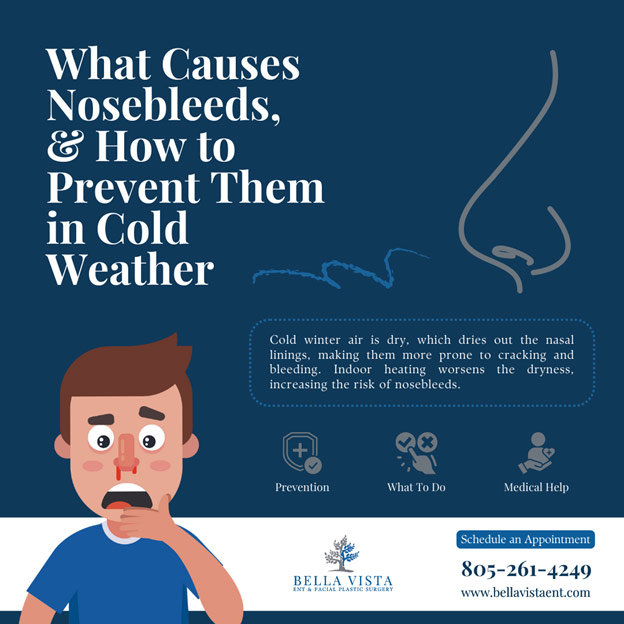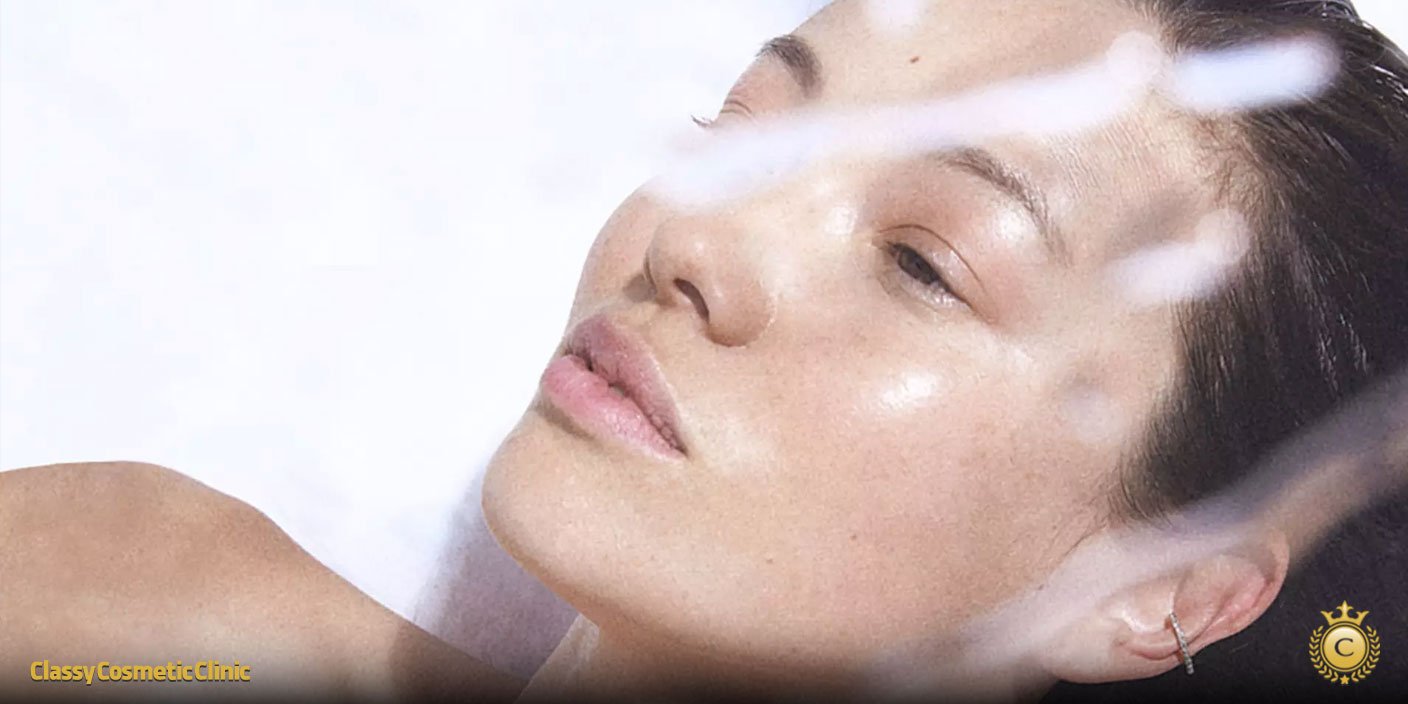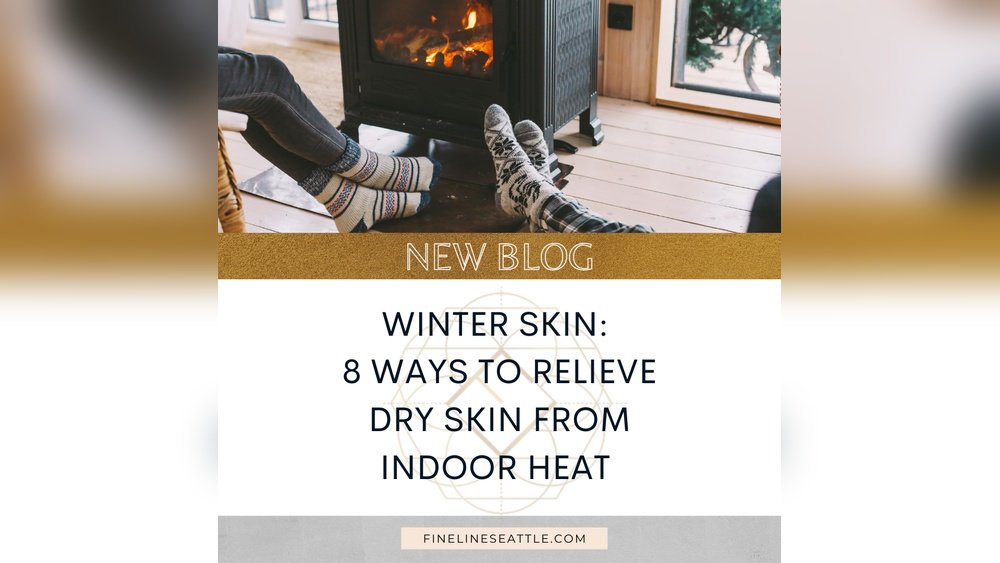Do you notice your face feeling tight, flaky, or itchy when you’re inside during the colder months? You’re not alone.
Indoor heating, while keeping you warm, can also be silently stealing moisture from your skin. This common problem, known as facial dryness due to indoor heating, leaves your skin looking dull and uncomfortable. But why does this happen, and more importantly, what can you do to protect your skin and keep it hydrated all winter long?
Keep reading to discover simple, effective ways to fight back against dry indoor air and restore your skin’s natural glow. Your comfort and confidence are just a few tips away!
Causes Of Facial Dryness Indoors
Facial dryness indoors often results from several factors related to indoor heating. Heating systems reduce humidity levels inside homes and offices. This dry air pulls moisture from the skin, leaving it tight and flaky. Understanding the main causes helps prevent discomfort and maintain healthy skin.
Indoor heating changes the environment around your skin. The heat dries out the air, which causes water loss from the skin’s surface. This loss weakens the skin’s barrier, making it rough and sensitive. Several specific causes explain why indoor heating affects facial skin so much.
Low Humidity Levels
Indoor heating lowers the air’s moisture content. The lack of humidity makes skin lose water quickly. Dry air absorbs moisture from your face, leaving it dry and cracked. Low humidity is the key reason for facial dryness indoors.
Heat From Radiators And Vents
Radiators and heating vents blow warm, dry air directly onto the skin. This constant heat removes natural oils that protect the skin. Without these oils, the skin becomes vulnerable to dryness and irritation.
Reduced Natural Skin Oils
Indoor heat causes skin to produce fewer natural oils. These oils keep skin soft and hydrated. When oil production drops, the skin surface becomes rough and flaky. The dry environment worsens this effect.
Extended Time Indoors
Spending more time inside during cold months increases exposure to dry air. The longer your skin faces indoor heating, the more moisture it loses. This leads to persistent dryness, especially on the face.

Credit: www.bellavistaent.com
Effects Of Indoor Heating On Skin
Indoor heating affects the skin in many ways. The warm air inside homes and offices removes moisture from the skin. This causes the skin to lose its natural oils. As a result, the skin feels dry, tight, and sometimes itchy.
These effects become more obvious during cold seasons. People turn on heaters more often. The dry air from heaters lowers indoor humidity. This creates an environment where the skin struggles to stay hydrated.
Dehydration Of Skin Cells
Indoor heating causes water loss from skin cells. The skin’s surface dries out quickly. This leads to rough and flaky patches. Dehydrated cells cannot protect the skin well. This makes the skin more sensitive to irritants.
Disruption Of Skin Barrier
Heating dries out the skin’s protective barrier. The barrier consists of oils and moisture. When this barrier weakens, the skin loses its defense. Harmful substances can enter more easily. This causes redness, irritation, and discomfort.
Increased Sensitivity And Irritation
Dry skin becomes more prone to irritation. Indoor heat can trigger redness and itchiness. Sensitive areas like the face feel tight and uncomfortable. Scratching can cause further damage and inflammation.
Accelerated Aging Signs
Dry skin from indoor heating can speed up aging. Fine lines and wrinkles appear more noticeable. Lack of moisture reduces skin’s elasticity. Healthy glow fades, leaving skin dull and tired.
Humidifiers And Moisture Solutions
Dry indoor air caused by heating systems often leads to facial dryness. Adding moisture back into the environment helps protect your skin. Humidifiers and other moisture solutions can restore balance and keep your skin hydrated throughout the day.
These devices add water vapor to the air, increasing humidity levels indoors. Higher humidity prevents skin from losing natural moisture. It also reduces irritation and redness caused by dry air.
What Are Humidifiers?
Humidifiers are machines designed to release moisture into the air. They come in different sizes and types, such as cool mist or warm mist. Small models suit single rooms, while larger units cover entire homes. Using a humidifier during cold months improves air quality and skin comfort.
Benefits Of Using Humidifiers For Facial Dryness
Humidifiers help keep facial skin soft and supple. Moist air prevents flaking, itching, and tightness caused by dryness. They support the skin’s natural barrier, reducing the chance of cracks or irritation. Consistent use helps maintain skin hydration all day long.
Other Moisture Solutions To Consider
Besides humidifiers, simple habits help add moisture to dry air. Placing bowls of water near heaters lets water evaporate naturally. Indoor plants release moisture through leaves, improving humidity. Using facial mists throughout the day refreshes and hydrates skin instantly.
Skincare Tips For Dry Faces
Dry skin on the face often worsens with indoor heating. The warm air inside removes moisture from the skin, leading to tightness and flaking. Caring for dry skin needs simple but effective steps. These skincare tips can help keep the face soft and hydrated during colder months.
Using the right products and habits helps protect the skin barrier. The goal is to restore moisture and prevent further dryness. Follow these easy tips to soothe and nourish dry facial skin.
Use Gentle Cleansers
Harsh soaps strip natural oils from the skin. Choose mild cleansers made for dry or sensitive skin. Avoid products with alcohol or strong fragrances. Cleanse with lukewarm water to keep skin from drying out.
Apply Moisturizer Regularly
Moisturizers lock in hydration and protect skin. Use rich creams or ointments that contain ingredients like hyaluronic acid or ceramides. Apply moisturizer right after washing your face to seal in moisture. Repeat moisturizing at night for extra care.
Use A Humidifier Indoors
Indoor heating dries out the air and skin. A humidifier adds moisture back into the room. It helps stop the skin from becoming rough and flaky. Keep humidity levels between 30% and 50% for best results.
Limit Hot Water Exposure
Hot water removes skin oils faster than warm water. Take shorter showers and avoid washing the face with very hot water. Cooler water helps keep the skin’s moisture intact and reduces irritation.
Protect Skin From Harsh Weather
Cold air and wind make dry skin worse. Cover the face with a scarf or wear a hat outdoors. Use a barrier cream to shield skin against harsh elements. This reduces moisture loss and prevents chapping.
Lifestyle Changes To Reduce Dryness
Indoor heating often dries out the skin on your face. This happens because heaters remove moisture from the air. The dry air pulls water from your skin, causing tightness and flaking. Simple lifestyle changes can help reduce this dryness. These steps keep your skin hydrated and comfortable during colder months.
Use A Humidifier To Add Moisture
A humidifier adds water vapor to the air. This keeps indoor humidity at a healthy level. Moist air helps prevent your skin from drying out. Place a humidifier in the rooms you use most. It makes a noticeable difference for facial dryness.
Adjust Your Heating Settings
Lower the thermostat by a few degrees. Cooler air holds more moisture than warm air. Turn the heating off during the warmest parts of the day. This reduces the drying effect on your skin. Try layering clothes to stay warm without raising heat.
Hydrate Your Skin Regularly
Apply moisturizer twice a day, morning and night. Choose creams designed for dry or sensitive skin. Moisturizers lock in water and protect your skin barrier. Use gentle, fragrance-free products to avoid irritation. Drinking plenty of water supports skin hydration too.
Limit Hot Showers And Baths
Hot water strips natural oils from your skin. Use lukewarm water instead to keep skin moist. Keep showers short, around 5 to 10 minutes. Pat your face dry gently with a soft towel. Apply moisturizer immediately after drying for best results.

Credit: www.finelineseattle.com

Credit: www.classycosmeticclinic.com
Frequently Asked Questions
Does Indoor Heating Cause Dry Skin?
Indoor heating reduces air moisture, causing skin to lose hydration. This leads to dry, flaky, and irritated skin, especially in winter.
How To Stop Skin Drying Out From Central Heating?
Use a humidifier to add moisture indoors. Lower the thermostat and avoid overheating. Apply moisturizer twice daily. Drink plenty of water and ventilate rooms regularly to keep skin hydrated and healthy.
Can Heat Make Your Face Dry?
Heat can dry your face by pulling moisture from your skin. Hot, dry air causes flaking and sensitivity. Use moisturizers and humidifiers to combat dryness.
How To Avoid Dryness Due To Heaters?
Use a humidifier to add moisture indoors. Keep heaters low and moisturize skin twice daily. Drink plenty of water.
Does Indoor Heating Cause Facial Dryness?
Indoor heating removes moisture from the air, making facial skin dry and flaky.
How Can I Prevent Skin Dryness From Indoor Heating?
Use a humidifier and moisturize regularly to keep skin hydrated indoors.
Conclusion
Indoor heating often dries out facial skin quickly. This causes itching, flaking, and discomfort. Simple steps help keep your skin healthy. Use a good moisturizer twice daily. Adding a humidifier raises indoor moisture levels. Drink plenty of water to stay hydrated.
Avoid long hot showers that strip natural oils. These habits protect your skin all winter. Stay consistent and your face will feel soft. Managing dryness improves your comfort and skin health. Small changes make a big difference during cold months.
 Skip to content
Skip to content 